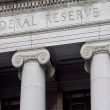“Civility”
by Jeffrey Saut, Chief Investment Strategist, Raymond James
September 4, 2012
“Civility is the glue that holds society together.”
... Anonymous
Webster’s defines “civility” as: civilized conduct; especially: courtesy, politeness. But, there was no civility last Friday afternoon. The place, CNBC; the time 3:05 p.m.; the anchors Michelle Caruso-Cabrera and Bill Griffith; the show “Closing Bell; the guests were myself, Bill Spiropoulos, Lee Munson, and Matt McCormick. The interview started off well enough with each interviewee responding to the anchors’ questions. However, when I was asked, “Jeff, I can't help but think we're back to this rally situation, did we not get another signal that if the economy goes south, Bernanke is there, and the market goes higher. What do you think?”
My response was: “I think the word change from ‘could’ to ‘will’ was significant. His statement now reads, ‘The Fed ‘will’ provide additional accommodation as needed.” Bernanke’s previous statement read, ‘The Fed ‘could’ provide additional accommodation as needed.’” I then went on to say, “But all you had to do this year was to follow the chart from my friends at Bespoke Investment Group. They have a chart of the typical trading chart pattern for the S&P 500 (SPX/1406.58) in election years dating back to 1928; and, this year’s pattern has about a 98% correlation with the historic pattern” . . . and it was there that civility ended as one of the other guests interrupted me in the mid-sentence by stating:
“I love those guys over there too (meaning Bespoke). [But] we’re in completely uncharted waters. The Fed governor said today these are absolutely nontraditional [times]. There is nothing like it, and he said I will print money to jack up the Dow Jones. I don't see how we're in a gray area.”
If had been given the chance to respond to my interlocutor I would have said, “First, I never said we are in a gray area. Second, if these are truly uncharted waters why is the correlation between the historical stock market trading pattern in an election year, and how the SPX tracking that historical pattern, so closely?!” Indeed, as I was about to say on CNBC, before being interrupted, was that all you had to do this year was follow the historical SPX trading pattern in an election year because it called for a “top” the first week of April follow by a sell-off into the end of May and then a zigzag rally into a short/intermediate trading top late this week or early next week.
One thing my unmannerly counterpart did get right was about Friday morning’s FOMC meeting where Mr. Bernanke again inferred that there remains a Bernanke “put,” which should prevent the equity markets from declining by too much. Before the Bernanke speech my friends at the brainy GaveKal organization wrote this:
“It is a mystery why the markets look forward with such excitement to a tedious and predictable restatement of Mr. Bernanke’s boundless confidence in the power of monetary policy to stimulate growth and create employment. After all, experience has shown that the Fed simply does not have these magical powers. Almost nobody outside the Fed genuinely believes that another round of quantitative easing, or another promise to hold interest rates at zero until the Last Trumpet, will do anything to accelerate economic growth. ... Additional QE today would be especially counterproductive. The US economy is no longer threatened by deflation, recession or a housing slump. In fact the biggest economic danger is the jump in oil prices – up 27% since the end of June. This is largely because of the speculation about more QE that was inspired by a series of Fed statements from early July onwards, when the probability of QE3 shot up to 70%, according to the regular Reuters survey of Fed-watchers. This oil price surge is already bigger than the 19% increase that occurred between late January and early March, contributing to the spring slowdown. Unless this oil price movement is quickly reversed or at least arrested, another slowdown is likely in the fourth quarter. But perhaps Bernanke will surprise the world today. Maybe he will not promise more QE3. He might even acknowledge that, as economic conditions normalize and oil prices inflate, QE can become dangerously counterproductive. If Bernanke did that, Jackson Hole really would be a ‘big speech’.”
I too would have liked to hear Mr. Bernanke say, “As economic conditions normalize and oil prices inflate, QE can become dangerously counterproductive.” Alas, that was just not to be. To the gasoline point, I was quite vocal about gasoline prices when they were declining. Now, however, they are rising, and they are rising materially. In previous missives I have mentioned that every penny decline in gasoline prices puts another billion dollars into the hands of consumers. Of course the reciprocal is also true and we are currently experiencing the highest gasoline prices ever for a Labor Day holiday ($3.80/gallon national average). Obviously, this is a headwind for the economy, as well as the stock market. And, maybe that’s why many of the stock market’s internal metrics have begun to weaken.
To be sure, Buying Power has been waning recently and the Advance/Decline line is not confirming the upside in the major averages. Moreover, last week “they” started running the laggards, which is typically a sign suggesting a trading top is close. Indeed, of all the indices I follow the only ones that were positive last week were the lagging indexes, namely the S&P 400 MidCap, the S&P 600 SmallCap, and the Russell 2000. Meanwhile, “smart money,” that would be commercial hedgers, are nearing their largest short sale position in eight years. Taken in conjunction with Bespoke’s election year chart, which is calling for an intermediate trading top around September 7th, I think it is time to counsel for caution. If I could script this week’s trading pattern, it would be for a decisive upside breakout above the 1420 – 1422 (basis the SPX), a level often mentioned in these comments. That breakout would be followed by a surge to somewhere between 1450 and 1477 that gets everybody excited, as well as “long” stocks, just in time for a trading peak late this week or early next week. If Bespoke’s chart continues to telegraph the future, the anticipated near-term peak would subsequently give way to a decline into mid/late October followed by another rally that carries the SPX out to new all-time highs.
The call for this week: Ben Bernanke’s word change from could to will is significant. The statement now reads: “The Fed ‘will’ provide additional accommodation as needed” instead of “The Fed ‘could’ provide additional accommodation as needed.” The implication is that QE3 is ready if needed. Certainly gold thinks QE3 is coming given Friday’s leap of about $30 per ounce followed by another $7.00 gain this morning. If past is prelude, gold’s surge is pointing the way higher and stocks should not be too far behind. Again, if I could script it, look for an upside breakout above 1420 – 1422 (basis the SPX) that is followed by a surge to somewhere between 1450 and 1477 that gets everybody excited, as well as “long” stocks, just in time for a trading peak late this week or early next week.
Copyright © Raymond James













